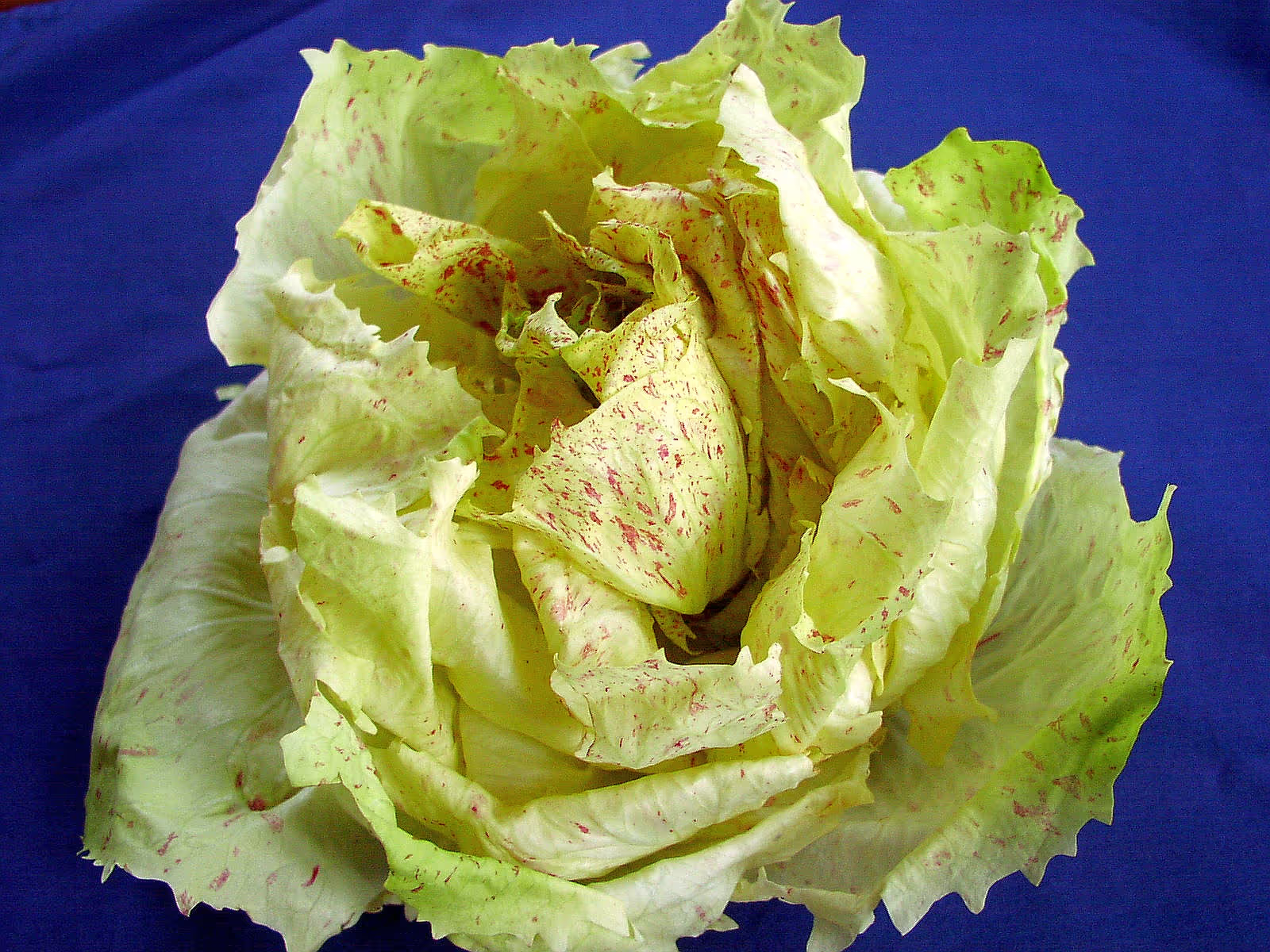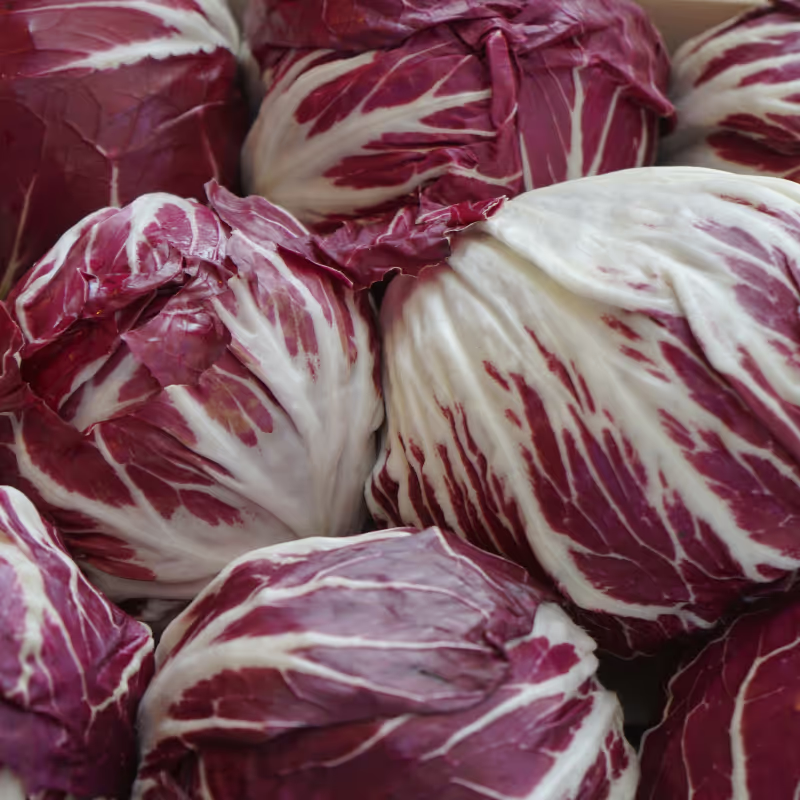What Does it Taste Like?
Radicchio is celebrated for its distinctively bitter flavor, which can be an acquired taste for some but a delightful contrast for others. The bitterness mellows when cooked, giving way to a subtle sweetness and a tender texture. Raw radicchio has a crisp, slightly crunchy bite, making it perfect for salads and slaws, while cooking brings out its softer, more nuanced side.
Varieties we grow

Castelfranco
This striking, speckled radicchio has a mild bitterness softened by subtle sweetness. Its crisp texture makes it perfect for salads, but it also caramelizes beautifully when grilled or roasted, adding depth to warm dishes and pasta.
Why Should I Eat It?
Radicchio is rich in vitamin K, which supports bone health, and vitamin C, an antioxidant that boosts the immune system. Additionally, radicchio contains folate, potassium, and fiber, making it a heart-healthy choice that aids digestion. Its vibrant color also indicates the presence of anthocyanins, compounds with anti-inflammatory and antioxidant properties.
Radicchio

May - November
Radicchio, the striking Italian chicory, stands out with its stunningly vibrant leaves that range from deep ruby red to variegated pink and white. This visually captivating vegetable brings a bold, bitter flavor that can elevate a variety of dishes. Loved by chefs and home cooks alike, radicchio is a versatile ingredient that adds both beauty and a distinct taste to any meal.
Recommended Storage
How Do I Store It?
Short Term
To keep radicchio fresh, store it unwashed in the crisper drawer of your refrigerator. Wrap it loosely in a paper towel and place it in a perforated plastic bag to allow for airflow. This method helps maintain its crispness and can extend its shelf life for up to a week.
Long Term
- Pickling: Pickling radicchio can yield delicious results, adding a tangy twist to its bitterness.
